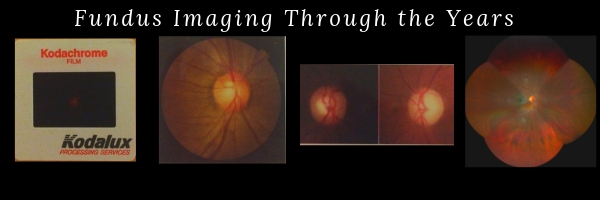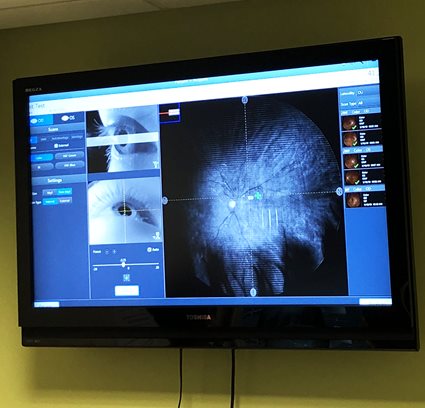The light-sensitive tissue found at the back of the eye is called the retina, which plays a crucial role in helping our brain interpret the images around us. It is the retina that soaks up light rays and translates them into signals that travel from the optic nerve to the brain. Retinal (fundus) examination is a very important component of an eye exam because it gives optometrists information about the patient’s overall systemic health. And, fundus photography is an excellent way to monitor for good health and track the progression of diseases like diabetes and macular degeneration.

Optometrists have been evaluating the retina for more than a century. While the foundation of the first retinal imaging devices has remained the same, newer devices have assumed updates and modifications that allow optometrists to be more confident in their overall diagnoses. According to Mary Jameson, BHS, CPOT, assistant director of Specialty Care at The Eye Institute (TEI) of Salus University, the progression of the photographs taken rather than just the actual camera is quite interesting. “First, we had slides to record the fundus images; then, we had the original Polaroid camera; then, Polaroid to laser printer; and now the Clarus,” she said. All pictured below.
This past year, The Eye Institute (TEI) installed new state-of-the-art equipment that will allow for more comprehensive ocular evaluation of its patients. The Zeiss Clarus 500 provides a larger and crisper field of view of the retina than older fundus imaging technology. It is the first and only fundus imaging system to provide true color and clarity within an ultra-wide field of view, enabling clinicians to capture high-resolution fundus images from the macula to the far periphery.
 The Zeiss Clarus 500 is a big step-up from the first retinal imaging devices used at TEI. While older instruments were tedious and uncomfortable to use, the Clarus works quickly to capture an image by bringing the optics to the patient, facilitating an easy and comfortable scan.
The Zeiss Clarus 500 is a big step-up from the first retinal imaging devices used at TEI. While older instruments were tedious and uncomfortable to use, the Clarus works quickly to capture an image by bringing the optics to the patient, facilitating an easy and comfortable scan.
With older imaging technology, zooming into photos would cause haziness and distortion of the image. However, when you zoom in on the optic nerve on a Clarus device, the resolution remains clear. Different patients have different retinal coloration and contrast between their retina and optic nerve. Some patients, such as those with glaucoma, may have washed out optic nerves that are difficult to capture. The Clarus 500’s sweeping LEDs allow for a properly exposed optic nerve every time, regardless of retina to nerve contrast. This is a difficult accomplishment for older traditional retinal cameras and imaging.
Retinal imaging is a key element of preventative care. By taking clear photographs of the back of your eyes, optometrists are able to better educate patients on abnormal findings. Both the optometrist and the patient can reach an understanding when they review images together, which will help in treatment and prevention.
The Zeiss Clarus 500 is an excellent addition to TEI’s extensive examination technology. Not only is it sleek and easy to operate, it also helps TEI’s doctors and staff provides an increased quality of care.